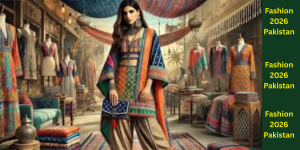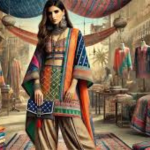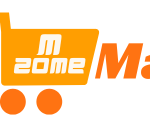1. History & Evolution
-
Rooted in centuries-old textile traditions such as handloom weaving, block printing, embroidery (zardozi, gota, phulkari, mirror work), and dyeing (ajrak, tie-dye, indigo).
-
The modern fashion industry began developing in the late 1980s and 1990s, with designers like Maheen Khan, Rizwan Beyg, and Faiza Samee pioneering contemporary styles.
-
By the 2000s, Pakistan’s fashion weeks and designer labels started gaining international exposure.
2. Major Segments
-
Haute Couture & Luxury Wear – High-end designers such as HSY, Sana Safinaz, Elan, Maria B., Nomi Ansari.
-
Pret & Ready-to-Wear – Affordable designer fashion for everyday wear (Khaadi, Generation, Sapphire, Gul Ahmed).
-
Bridal & Formal Wear – One of the strongest segments, with heavy demand locally and from the Pakistani diaspora.
-
Textiles & Lawn Industry – Pakistan is a global textile hub, and lawn fabric has become a fashion statement with seasonal launches.
3. Key Platforms
-
Fashion Weeks: Pakistan Fashion Week (PFW), PFDC (Pakistan Fashion Design Council) Sunsilk Fashion Week, Hum Showcase, Bridal Couture Week.
-
Fashion Councils: PFDC (Lahore), Fashion Pakistan Council (Karachi).
-
Magazines & Media: Diva, Libas, Sunday, and a strong presence on Instagram/TikTok.
4. Global Recognition
-
Designers like HSY, Sana Safinaz, Kamiar Rokni, Bunto Kazmi showcased collections internationally.
-
Pakistani models such as Mehreen Syed, Amna Babar, Hasnain Lehri gained global fame.
-
Pakistani brands are now exported to Middle East, Europe, and North America, especially for bridal wear.
5. Challenges
-
Lack of infrastructure for large-scale fashion exports.
-
Limited fashion education and R&D.
-
Economic instability affecting textile prices.
-
Piracy and copycat culture.
6. Opportunities
-
Huge diaspora market (especially bridal and festive wear).
-
Growing e-commerce fashion platforms.
-
Sustainable fashion and eco-friendly textiles.
-
Fusion of traditional crafts with modern cuts for global appeal.
✅ The Pakistan fashion industry is not just about clothing — it’s tied to heritage, culture, and modern identity. It holds strong potential to become a global leader in South Asian fashion with the right support and innovation.




